Change of Session Rooms
Tuesday, June 11
10:30~ ISPRM Session 3: from Room 5 to Room 6
10:30~ Sponsored Session: from Room 6 to Room 5
Wednesday, June 12
10:15~ Short Workshop 35: from Room 11 to Room 13/14
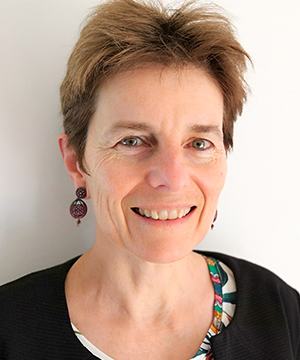
Isabelle Laffont
Euromov, IFRH, Montpellier University, France
Montpellier University Hospital, France
“Spasticity and neuro-orthopedics, the beating heart of PRM”
Summary & Biosketch
Personal Biography
As member of the “Montpellier and Nimes University Hospitals Federation of PRM”, I am in charge of the Department of Physical Rehabilitation and Medicine and oversee more than one hundred in and out patients receiving musculoskeletal and neurologic rehabilitation at any time. I am especially involved in rehabilitation of patients who sustained stroke, traumatic brain injuries, multiple sclerosis or cerebral palsy. Before I arrived in Montpellier in 2008, I was a PRM hospital practitioner for 13 years in Raymond Poincare Hospital (Garches, France), where I got a special expertise in care of patients with spinal cord injury and sequellae of poliomyelitis.
The principal focus of my scientific research concerns impairment, recovery and rehabilitation of the upper arm of stroke patients. My research activities are conducted at the Euromov Laboratory (Montpellier University, France), where I am currently leader of the “Neuroplasticity and Rehabilitation” group, which includes researchers in movement sciences and behavioral neurosciences, medical doctors and physiotherapists. Our group has two focuses: 1. Fundamental studies aiming to understand the link between brain lesions and disabilities through kinematic analysis of upper arm movements and functional brain imagery: the purpose is to explore brain plasticity and motor control adaptation leading to functional recovery after lesion. 2. Clinical studies and trials aiming to develop new rehabilitation protocols that include new devices such as rehabilitation robotics, virtual reality, and serious games.
In my daily practice, I have a special interest in spasticity and neuro-orthopedics. A few years ago, together with my PRM colleagues and our surgeons, we created the “Institute of Neuro Orthopedics of Montpellier (INOM)” dedicated to the care of patients with limb and spine deformities due to neurological diseases. Currently, we perform more than 1500 treatment procedures each year, including botulinum toxin injections, motor blocks and phenol injections, non pharmacological interventions, mini invasive percutaneous tenotomia, surgical procedures, and others. This activity is crucial in PRM since spasticity and its consequences often lead to the worsening of functional impairment in neurological patients, whatever age and underlying disease.
Summary of the Lecture
Spasticity and neuro-orthopedics, the beating heart of PRM
Neuro-orthopedics includes limbs and spine deformities related to various neurological diseases, mostly in a context of spastic troubles. PRM specialists are very familiar with such deformities that often lead to functional consequences, rendering their prevention and treatment more than ever crucial in our specialty. The better understanding of the musculoskeletal and neurological physiopathology underlying these phenomena has enabled us to improve our preventive and curative approaches. The clinical assessment of spastic and neuro-orthopedic deformities, based on a rigorous anatomical and physiological knowledge, is deeply rooted in our PRM clinical examination. The evaluation of their functional consequences relies on a patient-centered approach including fine-grained analysis of gait and of upper limb function. Motor blocks, dynamic EMG and movement analysis raise an increasing interest in these indications. The treatment of spasticity and its consequences is emblematic of PRM care because it is based on an integrative multimodal approach including rehabilitation, drugs, local treatments like botulinum toxin injections, and micro-invasive or conventional surgery in a multidisciplinary perspective. Lastly, spasticity and neuro-orthopedics represent an incredible field of research for the future of PRM, covering basic science, non pharmacological and pharmacological studies, surgical procedures improvements, and technological developments (neuromodulation, functional electrical stimulation, robotics...).
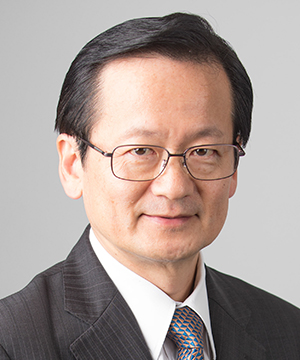
Kazuhisa Domen
Hyogo College of Medicine, Japan
“Multimodal Neurorehabilitation for Upper Limb Paralysis”
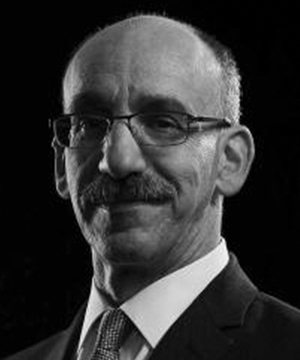
Alberto Esquenazi
MossRehab, USA
“Innovation Influencing Physical Medicine and Rehabilitation”
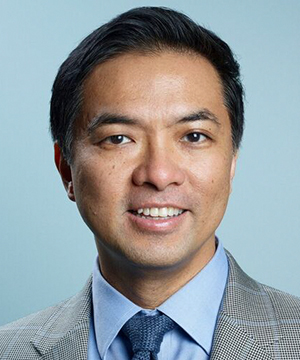
Gerard E. Francisco
University of Texas Health Science Center McGovern Medical School, USA
“Neuromodulation to augment post-stroke motor recovery: vagus nerve stimulation paired with rehabilitation”
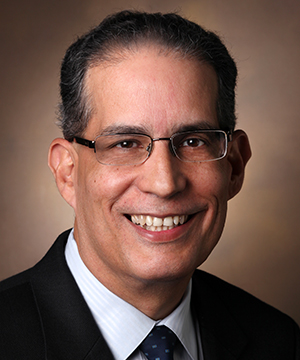
Walter R. Frontera
University of Puerto Rico, Puerto Rico
“ISPRM and the Future of PRM”
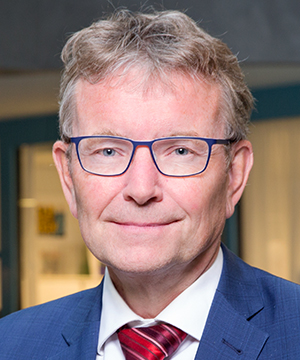
Gert Kwakkel
University Medical Centre in Amsterdam, Netherlands
“Moving stroke rehabilitation forward: What are the next steps?”
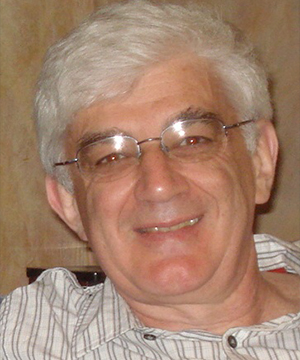
Mark L. Latash
Pennsylvania State University, USA
“Impaired Motor Control and Its Rehabilitation”
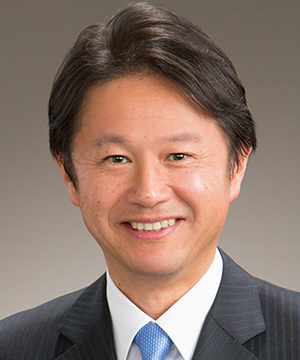
Masaya Nakamura
Keio University, Japan
“Regenerative medicine for spinal cord injury using iPS cells”
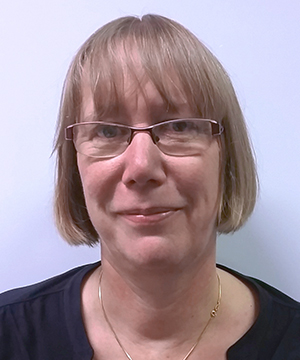
Helen Rodgers
Newcastle University, UK
“Robot Assisted Training for the Upper Limb after Stroke: main results of the RATULS multicentre randomised controlled trial”
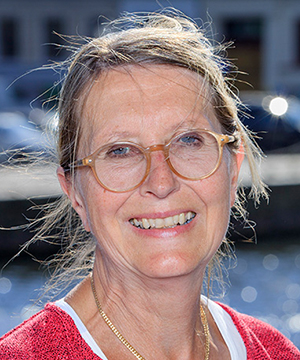
Katharina Stibrant Sunnerhagen
University of Gothenburg, Sweden
“Stroke rehabilitation-where are we heading?”
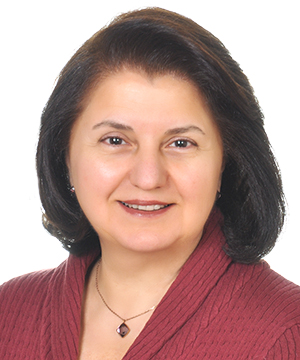
Gulseren Akyuz
Marmara University School of Medicine, Turkey
“Physical Therapy Modalities and Rehabilitation Techniques in the Management of Neuroptahic Pain”
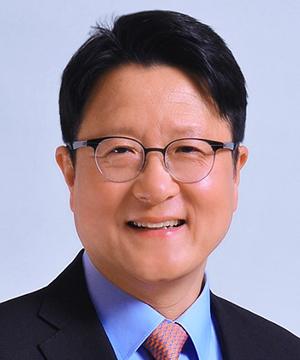
Moon Suk Bang
Seoul National University College of Medicine, Korea
“Emerging issues related with aging in cerebral palsy”
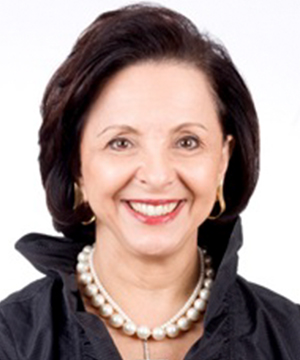
Linamara Rizzo Battistella
School of Medicine University of São Paulo, Brazil
“Thermography as support for clinical diagnosis and follow-up in PM&R”
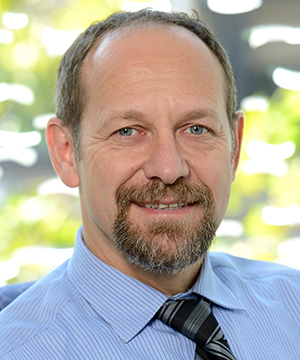
Pablo A. Celnik
Johns Hopkins University, USA
“Going back to the basics: Mechanism of motor recovery after stroke”
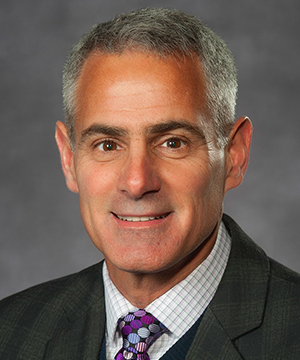
David X. Cifu
Virginia Commonwealth University, USA
“21st Century Brain Health: TBI, Neurodegeneration and Wellness”
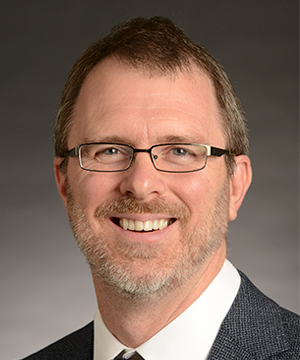
Robert C. Coghill
Cincinnati Children's Hospital, Department of Pediatrics, University of Cincinnati College of Medicine, USA
“Spatial Mechanisms of Pain: Emerging Targets for Rehabilitation Therapy”
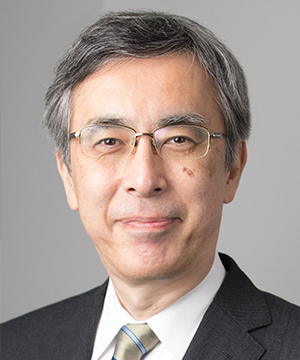
Nobuhiko Haga
The University of Tokyo, Japan
“Multidisciplinary Approach for Children with Congenital Lower Limb Deficiencies”
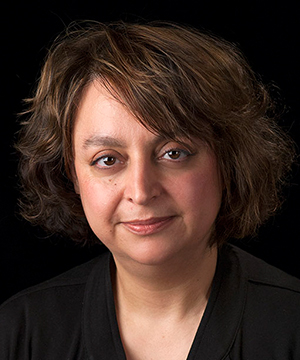
Fary Khan
Royal Melbourne Hospital, Australia
“REHABILITATION SERVICES IN DISASTER RESPONSE: ROLE AND FUTURE AGENDA”
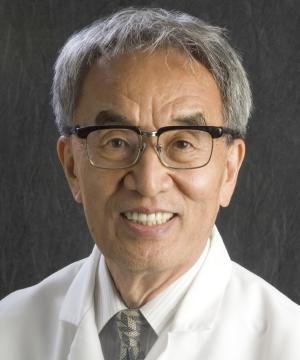
Jun Kimura
University of Iowa Hospitals & Clinics, USA
“New Application of F-wave Study”
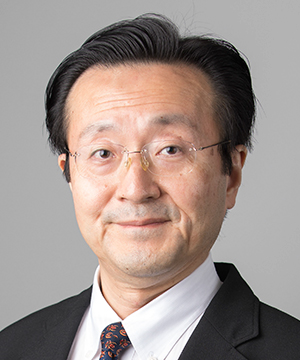
Masahiro Kozuki
Tohoku University Graduate School of Medicine, Japan
“Renal rehabilitation: a novel area which contributes to 13 million people in Japan”
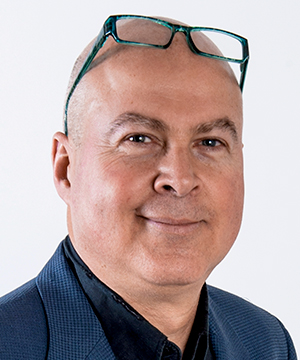
Hermano Igo Krebs
Massachusetts Institute of Technology, USA
“Robot Assisted Training for the Upper Limb after Stroke (RATULS): A 770 Stroke Patients Study- Kinematics & Kinetics Results”
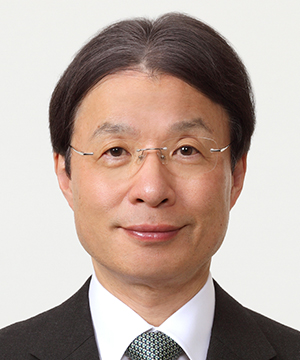
Toshikazu Kubo
Kyoto Interdisciplinary Research Institute, Japan
“History of Rehabilitation Medicine in Japan”
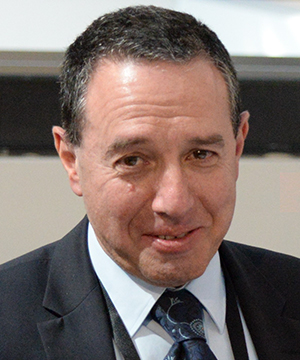
Jorge M C Lains
Rehabilitation Centre for the Central Region of Portugal, Rovisco Pais, Portugal
“Neurogenic Bowel Dysfunction after spinal cord injury and ICF”
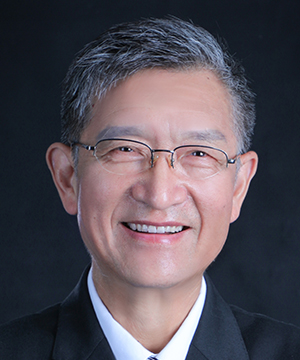
Jianan Li
First Affiliated Hospital of Nanjing Medical University, China
“Innovation of Physiological Ischemic Training in Rehabilitation of Ischemic Diseases”
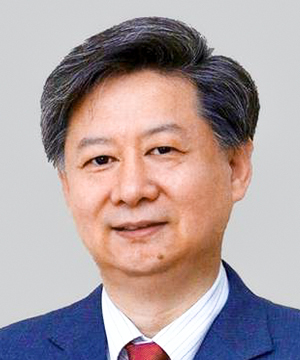
Jianjun Li
China Rehabilitation Research Center, China
“Dynamic Diffusion Tensor Imaging of Spinal Cord and Brain in Spinal Cord Injury - A Series of Animal and Human Studies”

Leonard Li
University of Hong Kong and Virtus Medical Group. Hong Kong SAR, Hong Kong, China
“Oral hygiene care program during inpatient stroke rehabilitation”
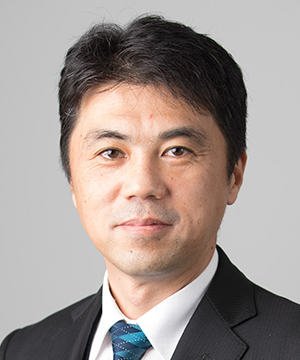
Takeshi Nakamura
Yokohama City University Graduate School of Medicine, Japan
“The effectiveness of aerobic exercise combined with noninvasive positive pressure ventilation”
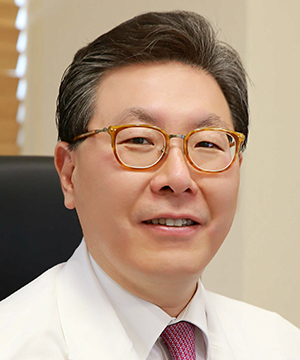
Nam-Jong Paik
Seoul National University College of Medicine, Seoul National University Bundang Hospital, Korea
“Applying recent technologies for rehabilitation”
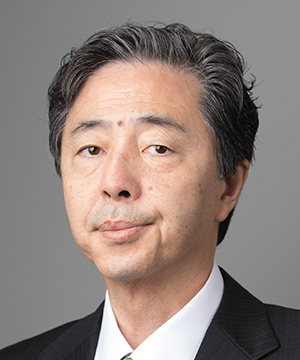
Yoichi Shimada
Akita University Graduate School of Medicine, Japan
“Exercise therapy for spinal disorders in the elderly”
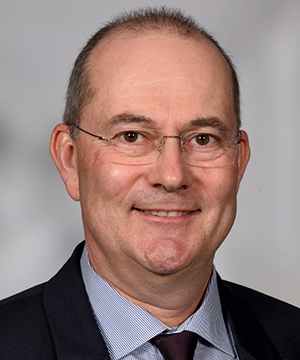
Gerold Hans Stucki
Swiss Paraplegic Research Switzerland/ University of Lucerne, Switzerland
“Practical steps when using the International Classification of Functioning, Disability and Health (ICF) in clinical routine and Clinical Quality Management”
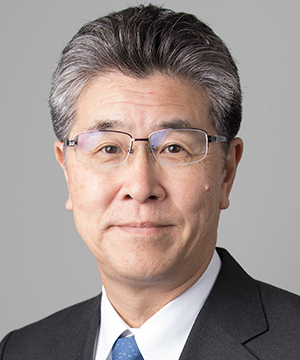
Fumihiro Tajima
Wakayama Medical University, Japan
“Development of assistive technologies to enhance quality of life in the elderly and persons with impairments. ”
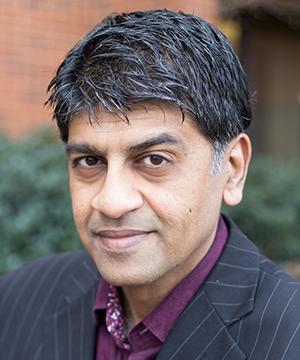
Gitendra Uswatte
University of Alabama at Birmingham, USA
“Rehabilitation for adults with severe upper-extremity impairment after stroke”
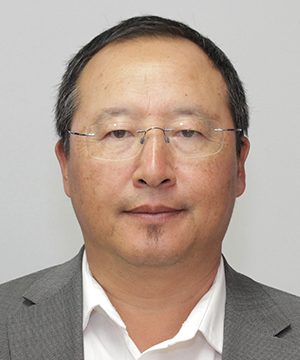
Xianghu Xiong
Burwood Spinal Unit, Burwood Hospital, New Zealand
“Spinal Cord Injuries - The past and Future: New Zealand & Global Perspective”
Ultrasound guided botulinum toxin injections in the treatment of spasticity and dystonia (Hands on training)
Many patients with a neurological disorders are affected by spasticity and some of them suffer from spasticity or its consequences.
Among all therapeutic options, BoNTA injections has an important place in the treatment of the spasticity.
Injection of the BoNTA into the muscle belly is the prerequisite for the success and safety of the treatment. But reaching the target muscle is not always easy.
Identification of the target muscle is usually done by palpation alone or using EMG - electrical stimulation.
Another approach, Ultrasonography is an interesting alternative as it offers the possibility to visualise the targeted muscle and to follow the injection of the product. Deep muscles as well as synergic muscles may be easily identified this way.
Ultrasound guidance can also help to prevent iatrogenic injection as well as its associated adverse events.
The ultrasound technique is fast, reliable and more comfortable for the patient than electrostimulation.
Finally ultrasonography gives also some information about the structural modifications of the spastic muscle which may modify the treatment.
The aim of this workshop :
-to show the advantages and limits of each techniques and especially ultrasound guidance.
-learn to differentiate normal muscle and neurologic muscle
-show to participants ultrasonographic anatomy of muscles most concerned by spasticity, injection sites
-discuss the indications, patterns and injection techniques
Musculoskeletal ultrasound: Lower limb
Musculoskeletal sonography is becoming an important part for evaluating and managing joint, nerve and soft tissue disorders. This course is designed to shorten the learning curve for health professionals interested in developing expertise in MSK ultrasound. The course will familiarize clinicians with key techniques used to perform MSK examinations. Clinicians will learn to recognize normal anatomy, common pathologies, and critically evaluate the images.
This introductory course is designed for clinicians who wish to become more familiar with the function of diagnostic ultrasound, its limitations, and its capabilities. Through didactic, interactive, and hands-on portions, learn the basics of performing a diagnostic ultrasound of various body parts. This course is designed to shorten the learning curve for health professionals interested in developing expertise in MSK ultrasound. Clinicians will learn to recognize normal anatomy, common pathologies, and critically evaluate the images. Attendees will become familiar documentation for musculoskeletal (MSK) ultrasound. Upon completion of this course, one'll leave with a solid skill set to readily implement into their practice.
How to use and implement
the International Classification of Service Organization in Rehabilitation (ICSO-R) 2.0
Strengthening rehabilitation services at health system level has become one of important agenda of WHO. WHO emphasizes the importance of implementation of rehabilitation services not only in hospital but also in community. Rehabilitation services must be included at acute, post-acute and long-term services; and at all level of health care: primary, secondary, and tertiary level (1,2).
However until now there is no standard and uniform classification to describe rehabilitation services. International Classification of Service Organization in Rehabilitation (ICSO-R) has been developed by group of researcher for this purpose (3). The most recent version (ICSO-R 2.0; 4)) has been finished and ready to be tested and implemented. The used of ICSO-R will be demonstrated and practiced.
Programme:
1. Serial lectures of ICSO-R: (Christoph Gutenbrunner, Carlotte Kiekens, Francesca Gimigliano, Boya Nugraha, Thorsten Meyer) (1.5 hours)
2. Practicing and discussion (all participants) (2.5 hours)
Rehabilitation needs and strategies for health and function preservation in adults aging with cerebral palsy
In individuals with cerebral palsy (CP), rehabilitation needs and treatment have been established, but mostly focused on the pediatric population. This workshop will focus on new and challenging issues in adults with CP. Adults with CP are found to have a higher rate of chronic health conditions and may gradually undergo a decline in strength and functional reserve, deterioration in physical activity, increased risk of musculoskeletal complications, and gradual changes in swallowing. There are a large number of adults with CP who do not receive effective care because they do not have access to appropriate health services. This workshop will integrate information based on research and ongoing clinical practice from the Stay-FIT Research Program in Canada, work pertaining to secondary health complications of chronic inactivity from the U.S., population healthcare services research in the UK, and work pertaining to general health status and unmet rehabilitation needs in South Korea. Rehabilitation needs and treatment in CP with aging will be a central focus of this symposium. In addition, viable interventions that may lessen the functional deterioration due to aging of CP will be discussed.
We would like to cover the following recently published studies: Non-communicable disease including mental health outcomes, Cardiovascular disease and mortality in adults with CP; General health status and unmet rehabilitation needs in adults with CP in South Korea; Understanding the modifiable risk factors for cardiovascular disease and multi-morbidity risk in adults with CP, Special issues in adults with CP including cervical dystonia and unrevealed swallowing problems
Cancer rehabilitation: Global perspectives for the delivery of care
Cancer is a significant cause of disability worldwide. It is estimated that 18.1 million individuals globally will be diagnosed with cancer in 2018. Nearly half of these cases will be in Asia, with a significant proportion in Europe, North, and South America. However, cancer is evolving from a terminal diagnosis to a chronic medical condition. Survival rates continue to increase due to improved methods for screening, earlier detection, and reduced toxicities from treatment. As individuals live longer with cancer, they have been found to experience significant and unexpected physical, cognitive, and psychological deficits because of the cancer itself or treatment effects. The purpose of this half day workshop is to provide participants with a broad overview of clinical and programmatic concepts relevant to the care of cancer survivors. The course will address concepts necessary for effective treatment of cancer-related impairments and functional decline. Each session will be focused on diagnosis, impairment, or areas of special interest relevant to cancer rehabilitation care delivery. Lecturers will be invited based on their subject matter expertise and international reputation. Presenters will be active members of the ISPRM and its special interest group in cancer rehabilitation. Attendees and speakers will have the opportunity at the end of each lecture and during networking breaks to participate in question and answer sessions. In addition, each speaker will lead case studies in a small group setting for more in-depth exploration of cancer rehabilitation topics.
What PRM physicians need to know about the ICF
The International Classification of Functioning, Disability and Health (ICF) was adopted in 2001 by the WHO as a reference framework for describing functioning, the third health indicator along with mortality and morbidity. Although optimal functioning is rehabilitation's ultimate objective, ICF is still not widely used in rehabilitation practice. To promote the use of ICF in real-life rehabilitation practice, international efforts in the field of rehabilitation medicine(PRM) have been initiated the last several years. For example, ICF Core Sets have been developed to give clinicians guidance in selecting what to assess in patients with specific health conditions. Furthermore, simple, intuitive descriptions of ICF Generic-30 Set categories have been developed in diverse languages to facilitate clinicians' understanding of what these categories mean. ICF-based clinical tools are also being developed. Based on these efforts, several local projects have been launched to foster real-life clinical use of the ICF. Fundamental for successful implementation of the ICF in rehabilitation practice is building and strengthening the knowledge and skills of PRM physicians on the ICF in the assessment, documentation and reporting of patient functioning using the ICF.
In this workshop, the essentials about ICF and ICF implementation that PRM physicians need to know will be introduced. The lecture topics include the fundamentals of the ICF, completed and ongoing international collaboration projects, existing ICF-based tools and tools in development, and local pilot projects implementing the ICF in real-life clinical practice. Opportunities and challenges of ICF implementation will also be addressed.
Super aged community:role for community based and primary rehabilitation care
In last 4 years a large group of colleagues from Japan and other different Countries worked together around these points to find common indications to face the problem of increasing number of disabled and old people who need Medical Rehabilitation in relation with efficacy/effectiveness , financial and time sustainability ,accessibility to be guaranteed to Persons and Governments.
First promoter was Biophilia Rehabilitation Academy and its Founder Prof. Takizawa starting from their experiences in rehabilitation in Japan (a surely super-aged Country ) .
Personal and motivated involvement in recovery of Functioning for patient ,family and care-givers, suitable programmes of cares and follow-up , simple devices, large network in the Community involving other professionals not only health aiming also to modify as necessary the environment, PM&R Leadership for evaluations and decisions from acute phases up to long term conditions.
All these points have value both in developed and in developing Countries, regarding different economic conditions and different Health Services conditions; the role for Community Services, for personal active commitment to reach health and autonomy is growing at any level. The matter connects with the questions about the future meaning and organization of Community and Primary Rehabilitation cares in different Countries (super-aged too ).
These are our key-points discussed in international Meetings ( Italy, Switzerland, Poland ) and publications ; now Kobe Congress could be surely the best place (not only because the Japanese contribution ) to share these ideas and to involve many other colleagues
Constraint-Induced Movement therapy: An Efficacious Form of Upper-extremity Neurorehabilitation
There are various rehabilitation methods for upper extremity dysfunction. Among them, Constraint-Induced Movement therapy (CIMT) is recognized worldwide as an evidence-based neurorehabilitation intervention for adults with chronic stroke. The components of CIMT include not only intensive training of the more-affected arm but also a comprehensive set of procedures for rehabilitating upper extremity function, including restraint of the less-affected arm and a transfer package behavioral strategy that improve the frequency of upper limb use in real life. The mechanisms by which CIMT benefits arm function are thought to be reduction of learned nonuse and induction of use-dependent plasticity. Recent studies suggest that patients with severe upper-extremity dysfunction, who would not qualify for the original form of CIMT, can be treated by combining CIMT with other modalities, such as transcranial direct current stimulation, peripheral neuromuscular electrical stimulation, botulinum toxin treatment and robotic therapy. This workshop will outline the evaluation and treatment methods used in CIMT, present the theoretical basis for this approach, and discuss implications for clinical practice.
Dysphagia rehabilitation: Pathophysiology, Evaluation, and Treatment (level 1)
Oropharyngeal dysphagia (OD) is a distressing condition that affects patients with neurological disorders, among others, and needs multidisciplinary management. It not only affects the social and psychological wellbeing of patients, but leads to malnutrition, aspiration pneumonia, prolonged hospital stay and premature death. Up to 20% of patients with stroke suffer from early aspiration pneumonia, a major cause of death during the first year after discharge. Malnutrition after stroke is another complication associated with poor outcome including death, dependency and institutionalization. Despite its enormous impact on functional capacity, quality of life and survival, OD is both underestimated and underdiagnosed as a cause of major nutritional and respiratory complications in stroke patients.
Dysphagia screening is not systematically performed in most countries and so patients go untreated. Moreover, current treatments are mostly based on nutritional supplements, bolus modifications and postural adjustments, directed at protecting patients from aspiration. Recently, new neurorehabilitation interventions have been developed and tested in post-stroke dysphagic patients, with the aim of promoting cortical neuroplasticity to recover the swallowing function. These new interventions are a breakthrough in dysphagia treatment, moving from compensation to recovery, from adaptation to modulation, and could have a great impact on clinical outcome and quality of life of post-stroke dysphagic patients.
The aim of this long workshop is to give to participant the basic knowledge about oropharyngeal dysphagia in neurological disorders and to promote reeducation and rehabilitation strategies.
Dysphagia rehabilitation: Pathophysiology, Evaluation, and Treatment (level 2)
Oropharyngeal dysphagia (OD) is a distressing condition that affects patients with neurological disorders, among others, and needs multidisciplinary management. It not only affects the social and psychological wellbeing of patients, but leads to malnutrition, aspiration pneumonia, prolonged hospital stay and premature death. OD is both underestimated and underdiagnosed as a cause of major nutritional and respiratory complications in stroke patients.
This workshop offers an approach to link evaluation and treatment to the underlying pathophysiology for professionals sensibilzated with oropharyngeal dysphagia (level 2) or having performed the level 1 workshop on oropharyngeal dysphagia. Participants should have basic knowledge about swallowing and dysphagia. To facilitate their understanding and to enhance practical skills, we will conduct a small group format to practice evaluation from Videofluoroscopy (VF) and Videoendoscopy (VE) images and to generate treatment plans based on real clinical images. The goal is to detect abnormalities (penetration, aspiration, and residue) and assessing severity. Further, they can glean of the experience of the presenters to develop a strategy to interpret the images and enhancing rehabilitation recommendations. Each small group will have a screen (monitor) to share the VF and VE images. The number of the group is five and the ideal number of participants in each group is at most six to eight with one lecturer. In each group, one big screen is prepared. Instructor shows many VF and FEES images and participants learn how to interpret VF and FEES
Compering and contrasting east and west robotics utilization in acute inpatient Neurorehabilitation
This workshop will provide an opportunity to compare and contrast the use of technology for rehabilitation in 2 different healthcare environments, one in Japan and one in the USA.
Educational Objectives:
Compare and contrast the robotic interventions used in acute inpatient rehabilitation in persons with stroke and acquired brain injury. East and West approach. The West represented by MossRehab in Philadelphia, USA and for East Fujita Health University Nagoya, Japan
Review robotic technology used for neurorehabilitation in the West
Review robotic technology used for neurorehabilitation in the East
Evaluate outcomes of use of technology in early neurorehabilitation
Rehabilitation for motor impairments in people with Parkinson's disease
Parkinson's disease (PD) is a progressive neurodegenerative disease that presents with complex non-motor symptoms as well as classical motor symptoms. Although medical and surgical treatments alleviate these symptoms, there are no treatments that slow the neurodegenerative process. Eventually, in the late-stages of the disease, most patients with PD experience treatment-resistant motor impairments, such as postural instability, freezing of gait, and falling. Therefore, rehabilitation therapies are used as an adjunct treatment to reduce disability and improve the quality of life in patients with PD.
Over the past 20 years, numerous studies investigating the efficacy of rehabilitation therapies in patients with PD have been published. Moreover, recent studies have suggested that intensive rehabilitation might be beneficial even in the early-stages of PD. Based on this evidence, recent guidelines for the management of PD recommend the referral of patients to physical therapists in the early-stages of the disease as well as disease-specific rehabilitation therapies.
This workshop is aimed to provide the latest evidence of rehabilitation for motor impairments and discuss how they can be used in clinical practice.
1. Therapeutic exercise for various impairments in Parkinson's disease
- Se Hee Jung, Seoul National University Boramae Medical Center
2. Effect and mechanism of robot-assisted gait training in Parkinson's disease
- Han Gil Seo, Seoul National University Hospital
3. Gait training using virtual reality: things to be considered
- Won-Seok Kim, Seoul National University Bundang Hospital
Finding the right balance of workload to optimize sports performance and reduce injury
As of 2017 there were nearly 56 million Americans that participated in some form of running (www.statista.com), more than 500,000 high school aged baseball players, and between 18-24% of all adolescents in Japan between the ages of 10-19 that participate in baseball (www.statista.com). However, with increased participation numbers in these sports comes an associated large number of overuse injuries. Therefore, it is paramount that Physiatrists are aware of the most up to date research in ways to reduce injury risk and be able to return athletes to participation in an efficient but safe manner. In this session, internationally recognized experts will share their expertise and clinical perspectives on what is and is not known about appropriate volume as well as workload increase rates on the development of injuries in active people. First, Dr. Jason Zaremski, who is a leading expert on overuse throwing injuries in baseball players, will present the latest research on pitch counts in baseball pitchers and if there is more to workload than just volume of pitches thrown. Next, Dr. Kevin Vincent, an international running medicine expert, will discuss the data regarding the 10% rule and injury risk and if this recommendation is too conservative based on recent evidence. Third, Dr. Gerard Miranda will discuss the importance of finding the right mix of workload and rest for maximal performance in adolescent aged athletes. Finally, Dr William Micheo will discuss how to design an optimal rehabilitative program based upon level of competition of injured athletes.
Cochrane rehabilitation workshop: Apply CochRane Evidence with Confidence (ACREC)
Interest in evidence-based medicine (EBM) had grown exponentially since the last 3 decades; critical appraisal skills is central to enabling healthcare professionals to decide on usefulness of research evidence and its scientific validity. This intensive 4-hour workshop will introduce the key principles of systematic review and meta-analysis of published research. Delivered through presentations and exercises, the workshop will give participants the basic skills to appraise a systematic review and apply its evidence in clinical setting.
This workshop is aimed at PMR residents & specialists, and other health professionals who have to make healthcare-related decisions.
By the end of the workshop, participants should be able to:
*explain what a systematic review and meta-analysis are
*develop a focused systematic review question
*demonstrate skills in critical appraisal
*interpret the forest plot
*present the results to meet the needs of clinicians, other healthcare professionals and researchers
The lecture topics include:
*Definition of what SR & meta-analysis and their role/ importance within a health setting
*Appraisal of systematic review:What are the hallmarks of a trustworthy systematic review?
*Understanding the forest plot, effect size and strength of evidence underpinning a result from a systematic review
The workshop will also include the activities below:
*Role play: Application & communication the evidence in clinical settings
*Small group activity: Appraisal of selected systematic review
InSCI and the learning health system: Implementing the results of the multi-country InSCI survey
For the first time, the 20-plus country, International Spinal Cord Injury (InSCI) Community Survey will provide robust and comparable information about the 360 degree perspective of the experience and needs of people with SCI as well as the scope and adequacy of the societal response to those needs. Besides the research output that is described in another workshop, it is important to review how countries are planning to use the InSCI data to directly inform their health systems and rehabilitation services. Building on InSCI data about the countries' societal response to SCI, a true 'learning health system' can be initiated so that countries can learn from the societal responses of other countries and improve coverage and quality of services. After a short introduction by the Chairs on the InSCI survey and the model of the Learning Health System, three participating country representatives will outline their plans for implementation of the InSCI data for policy reforms in their health sectors.
Role of rehabilitation for management of Post-polio syndrome
The polio epidemic ceased around the world. However, many polio survivors are faced at risk of developing Post-polio syndrome (PPS). Although prevention of the onset and progression of PPS is very important, several factors inhibit it. Firstly, polio survivors themselves don't know well about PPS. It may deprive the chance from them to seek medical care. Secondly, medical doctors cannot afford appropriate evaluation and interventions because of the lack of knowledge and experience about PPS. Finally, there is a misunderstanding that polio is a past disease. Therefore, enough effort to establish the healthcare system for PPS has not been paid. However, there have been some attempts to overcome this situation, Promising interventions include regular medical checks, reevaluation and/or prescription of orthosis, walking aids, exercise therapy, education, and peer support program etc. In this session, we will share the current knowledge and experience about PPS practice from experts and discuss about how to establish the best practice for persons with PPS.
Smart care system based on ICT and robotics from hospital to home
Many countries will become a super-aged society within the next few decades. Therefore, we anticipate the explosive increase of older people who stay unhealthy in later life which leads to a burden on the society such as increased medical and care expenses. Rehabilitation engineering and assistive technology have grown rapidly according to the increased needs of rehabilitation and long-term care. In recent, mobile health or smart care and rehabilitation robotics have been globally highlighted in health care services. Robotic care enables to provide accurate and consistent health care services such rehabilitation therapy to the patients. Robotic care has an advantage of controlling the delivery movements and minimizing the variability of differences between each service. It can be provided to severely disabled condition and it has a dose-effect responsiveness or reproducible, objective results. Several countries anticipating to enter super-aged society in near future are preparing to apply for robotic care in clinical setting through the convergent research between medicine and engineering. In this session, we aimed to overview the recent development of Smart care system based on ICT and robotics for both inpatient care and community-based care. The development of Care Robot System to support the medical professionals and the Robotic Smart Home (RSH) project to develop a comfortable, safe home environment for the elderly and individuals with disabilities will be introduced in this session.
Setting meaningful goals in rehabilitation; a multidisciplinary approach involving chaplaincy
Goal setting is a key characteristic of modern rehabilitation. However, it remains a challenge to set goals which patients find personally meaningful. We have developed a practical tool to set meaningful goals in rehabilitation. The goal of the workshop is (i) to present the tool to set meaningful goals in rehabilitation, and (ii) to share our experience in working with the tool.
Recent chaplaincy-based research has explored global meaning in rehabilitation patients. Global meaning was found to comprise five aspects: core values, relationships, worldview, identity and inner posture. It was also found that these aspects of global meaning affect rehabilitation motivation and decisions. We have used these findings to develop the tool to set meaningful goals in rehabilitation. The tool consists of three parts.
Part 1: A session of the rehabilitation physician, chaplain and patient to explore the patient's global meaning.
Part 2: The results of this session, in combination with information on the medical diagnosis and functioning, are used to set overall rehabilitation goals (e.g. returning to my role as grandmother). The overall goals are communicated to the other members of the rehabilitation team (e.g. physiotherapist, occupational therapist, psychologist, social worker, etc.).
Part 3: The other members of the rehabilitation team elaborate on the overall goal and derive specific rehabilitation goals from the overall goal (e.g. improving mobility, being able to walk).
After the presentation of the tool itself, a rehabilitation physician, chaplain and physiotherapist will share their experience in working with the tool.
The evaluation and management of musculoskeletal disorders in cancer patients
Due to advances in treatment and to an aging population, the number of cancer survivors worldwide is expected to reach over 24 million in the next 5 years. Treatment for cancer can cause significant morbidity, as previously healthy tissue is damaged by surgery, radiation, and/or chemotherapy. Furthermore, debility and cancer-associated neuromuscular disease contribute to weakness, pain, and reduced function.
Musculoskeletal impairments resulting from cancer and cancer treatment are often distinct from more common causes of musculoskeletal disorders (i.e. sports-related injuries), and more complex given the altered anatomy and biomechanics brought on by cancer treatment. This significantly reduces quality of life in cancer survivors, and represents an unmet need. An estimated 60% of older adults have musculoskeletal pain at the end of life, which is potentially modifiable with rehabilitation interventions. Additionally, long-term survivors often face chronic disabling conditions as a result of treatment rendered years earlier.
Physiatrists are uniquely suited to manage musculoskeletal complications of cancer and cancer treatment. This workshop will review the diagnosis and management of musculoskeletal impairments unique to the cancer population, including: post-mastectomy pain, radiation fibrosis, aromatase inhibitor arthralgias, sarcopenia/cachexia, and bone metastases.
Additionally, this workshop will cover:
- Safety and indications for interventional procedures in cancer patients
- The integration of physiatric care into management of patients with advanced disease
- The role of the physiatrist in the multidisciplinary oncology team
Members of this workshop include cancer rehabilitation physiatrists representing four major US academic medical centers, who have published and presented internationally about cancer rehabilitation.
Promoting plasticity. New frontiers of functional surgery for spasticity treatments from miniinvasive procedures to selective surgical techniques
Spasticity is a part of upper motor neuron syndrome that results in upper and lower limb dysfunction and deformities. To treat fixed contractures and abnormal movements related to muscle overactivity there are multiple treatment strategies to reduce maladaptive plasticity related to afferent/efferent dysfunctions promoting long-term plasticity through sensory-motor and biomechanical rebalancing to facilitate control of selective and/or multijoint movements and posture. Up to now performing clinical and/or instrumental evaluation and/or anesthetic motor nerve blocks with EMG and Ultrasound guidance it is possible to distinguish between spasticity and contracture, to select the best treatment procedures and to predict short and long-term treatment outcomes (reduction in Ashworth Scores, active and passive range of motion improvements ).To increase the treatment options novel mini-invasive techniques will be presented to perform safe, efficient neurotomy, tendon- muscle lengthening:
1. Cryoneurotomy utilizes a cryoprobe with a -60 C ice ball to cause myelin disruption and Wallerian degeneration while preserving the neural tube with less reported damage to surrounding structures than the alcohols.
2. Laser selective neurotomy and / or muscle lengthening using a laser through a needle cannula under Ultrasound guidance using local anesthesia
3. Microsurgical neurotomy allows for the selective fascicular neurotomy to key muscle groups and fascicles while avoiding sensory branches and negates the need for long surgical recovery times.
4. Microinvasive percutaneous needle tenotomy of the finger flexors.
Hands on workshop: Serial casting and electrical stimulation as adjunctive therapies to enhance botulinum toxin injection for focal spasticity
Purpose:
There has been an increase in interest and publications focusing on the value of adjunctive therapies such as serial casting and electrical stimulation post botulinum toxin-A (BoNT-A) injections to help enhance treatment outcomes for upper and lower limb spasticity.
This short workshop will guide the participant with evidence based and practical approaches in utilizing serial casting and electrical stimulation post BoNT-A injections to enhance spasticity management.
This workshop will also explore the evidence-based mechanism of action of serial casting and electrical stimulation in enhancing the action of BoNT-A at the muscle and synaptic level.
Objectives:
1. To provide evidence-based review of serial casting and electrical stimulation as adjunctive therapies to botulinum toxin A (BoNT-A) for spasticity management.
2. To demonstrate hands on technique of using electrical stimulation and serial casting post BoNT-A treatment in the clinical setting.
3. To provide clinical pearls and discuss barriers in the implementation of casting and electrical stimulation post BoNT-A for spasticity management.
Radiation free interventions in physical & rehabilitation medicine
Pain is the most common complication and disabling symptoms in patients undergoing neurorehabilitation. The source of pain is either joint, muscle, spine or nerves. Fluoroscopy guided injections is the most commonly used technique to perform local interventions at these sites leading to high dose of radiation exposure. Ultrasonography (US) guided pain intervention is the way to treat these painful conditions, as it offers significant advantages over fluoroscopy including no radiation exposure and red time dynamic imaging. This Workshop will include the concepts of real time dynamic Ultrasound and its clinical applications in managing these painful conditions with radiation free guided interventions.
Speaker 1- 20 min- Dr Navita Purohit - Real Time Dynamic Musculoskeletal Ultrasound (USG)
Speaker 2- 20 min- Dr Abhishek Srivastava- Sonoanatomy of Upper and lower Limb Muscles
Speaker 3- 20 min - Dr Amit Bhargava - Sonoanatomy of Upper and Lower Limb Joints
Speaker 4 - 20 min - Dr Navita Purohit - Sonoanatomy of Cervical and Lumbar Spine
10 min - Discussion and Station Distribution
Hands on Demonstration on Volunteers with Rotations of Delegates
Station 1 - 50 min - Dr Navita Purohit - Cervical and Lumbar spine Interventions
Station 2 - 50 min - Dr Amit Bhargava - Joint Interventions
Station 3 - 50 min -Dr Abhishek Srivastava - Muscles Interventions
New biomarkers for functional recovery after stroke
There is accumulating evidence that recovery after stroke follows biological destiny, i.e. proportional recovery rule. To evaluate whether a certain intervention results in superior outcome beyond the destiny, reliable biological markers for impairment rather than disability are essential, i.e markers for true recovery but not compensation. In this session, we would introduce novel peripheral and central markers for true recovery, that is, synergy patterns of muscles and phase synchrony of EEG, respectively.
The International Spinal Cord Injury (InSCI) Community survey: A study in 20+ countries across the globe
The International Spinal Cord Injury (InSCI) community survey has been developed to gain information about the lived experience of persons with SCI within and across diverse nations. It is the first survey conducted simultaneously in many countries and WHO world regions that identifies the factors associated with functioning, health, and well-being of persons living with SCI. InSCI is part of the Learning Health System for Spinal Cord Injury (LHS-SCI), a joint effort of ISCoS and ISPRM to implement the recommendations of the International Perspectives on Spinal Cord Injury. The LHS-SCI will be outlined in a second session proposed for this meeting.
In this session, 4 speakers will present the design and first results based on the available datasets of over 10,000 people with SCI from more than 20 countries. Participants were adults living in the community with SCI of traumatic or non-traumatic origin. Data collection took place in 2017-2018. The contents of the questionnaire is based on the International Classification of Functioning, Disability and Health Core Sets for SCI.
Regenerative rehabilitation of the nervous system
Regenerative Rehabilitation is the integration of principles and approaches from the fields of rehabilitation science and regenerative medicine. Regenerative medicine focuses on the repair or replacement of tissue lost to injury, disease, or age, primarily via the enhancement of endogenous stem cell function or the transplantation of exogenous stem cells. The use of cellular therapy or tissue engineering is a promising alternative to the current standard of care. The focus of rehabilitation science is the use of mechanical and other stimuli to promote structural and functional recovery. The field of Regenerative Rehabilitation integrates these two approaches for better understanding of the molecular and cellular responses to biophysical signals with the ultimate goal of optimizing outcomes. Recent research in animal models have shown the additive effect of the combination therapy when treating neurological diseases. In this symposium we will review the principles of regenerative rehabilitation applied to neurological diseases such as stroke, spinal cord injury.
Pediatric pulmonary rehabilitation: How different from adults?
Pulmonary rehabilitation in pediatric setting is becoming more important by the day. The invention of novel genetic therapies and the implementation of newborn screening programs for cystic fibrosis (CF) has augmented the need for keeping these children alive and complication-free. It has been announced in this year's world CF congress that by 2019, most common mutations will have specific treatments. For non-CF bronchiectasis patients, pulmonary rehabilitation is key in protecting lung functions and quality of life. The role of pulmonary rehabilitation is also increasing in asthma with the evidence suggesting its implementation even when exercise induced bronchoreactivity is present. Last but not least, pulmonary complications are the most important cause of mortality and morbidity in children with neuromuscular disorders.
The evidence for pulmonary rehabilitation measures in the current literature mostly includes studies in adult population. It is inevitable to implement this evidence in daily practice, but a practitioner must be aware of the different approaches in pediatric population. The continuation of these practices into teenage years and to adulthood is also crucial to keep patient adherence to these therapies at an optimal level.
In this short-workshop, it is aimed to review the general principles of pulmonary rehabilitation in pediatric population and to define the differences and similarities from the adult population. Cystic fibrosis will be also discussed as it is the key disease that require continuous care from rehabilitation professionals. The differences between the more conventional approaches and devices and technological interventions will be among the discussions.
Introduction of 3D printing into a community rehabilitation hospital in a developing world setting
3D Printing is a new technology that has the potential to markedly change the delivery of healthcare in rehabilitation medicine. The use of inexpensive 3D extrusion printing can make the fabrication of custom molded orthotics and prosthetics available in a number of settings and allow for the delivery of durable medical equipment in challenged environments. To illustrate how a successful program can be started, we present the development of a 3D printing program in Kingston Jamaica at the Golding Rehabilitation Hospital which provided the first 3D printing solution available in a health care setting in the English speaking Caribbean.
The first part of the discussion will have Dr. Rand introduce the principles of 3D printing, including a description of the technology, the minimal requirements for producing clinically useful materials, and a review of the steps of design, fabrication, and delivery. This will be followed by a presentation by Dr. Dixon of the concept of a 3D printing solution being provided in a limited resource environment to allow for provision of custom printed devices. The use of open source software with consumer grade printers and materials allows for low cost yet effective devices to be made. Finally, Dr. Bartels will present a discussion of how to clone this operation with the development of a "3D Printer in a Box" solution. This will highlight how a low cost, sustainable program of 3D printing can be introduced into even the lowest resource environments.
Instrument guided injections for spasticity management by using ultrasound and nerve stimulator
Botulinum toxin (BoNT) is the main therapy procedure for physiatrists to manage spasticity for last more than 25 years. BoNT injections have been performed with and without guidance. However, research has shown that instrument guided botulinum toxin injections are more effective than those without guidance. Among the tools used to guide injections, ultrasound has been a popular choice. The reason is that ultrasound-guided injections, compared to nerve stimulator or EMG guided injections, are less invasive and allows visualization of target muscles and needle presence. While BoNT injection has become widely used for target directed spasticity therapy, alcohol neurolysis offers several advantages: it is longer lasting, can be used for widespread spasticity when toxin doses in excess of the safe maximum would be required, can be used in cases of resistance to toxin, and the medication is hundreds of times less expensive. Neurolysis of peripheral motor nerves with alcohol (ethanol ›45% or ›3% phenol) can be performed to treat regional spasticity. Motor nerve blocks also can be easily done with ultrasound guidance by visualizing nerves nowadays. This workshop will review the use of ultrasound and nerve stimulator for BoNT and phenol/alcohol injections, and provide hands-on learning sessions with demonstrations of all major muscle groups and peripheral nerves of the upper & lower limbs by participants. Upon completion of this workshop, participants will be comfortable using ultrasound and nerve stimulator for chemoneurolysis with BoNT and phenol/alcohol.
Sono-anatomy and injection techniques around the neck
Many clinical conditions causing chronic and disabling pain stems from the neck. Due to the nerve convergence and various radiating patterns, it is easy to misdiagnose cervical diseases which can lead to unwarranted and possibly more invasive interventions that fail to resolve the underlying issue. Cervical region contains numerous vital structures that may shun most practitioners away from providing the proper and effective treatments to the patients.
The purpose of this session is to provide an extensive review of neck anatomy and translate that to ultrasound images and introduce interventional techniques. Learners can incorporate the information to their daily practice to improve patient care safely.
The session will be divided into three parts, anterior, lateral, and posterior aspects of the neck. Instructors from various specialties such as physiatry, spine and pain medicine, sports medicine, and anesthesiology will present each section.
Topics include brachial plexus, stellate ganglion, anterior cervical muscles, greater and lesser occipital nerves, cervical spine, medial nerve branch nerves, and posterior cervical muscles. Lectures will be kept brief to allow time for demonstration and hands on practice for the attendees.
Opportunity will be ample for everyone to engage and share their experience. It is for sure to provide a learning environment that encourages interaction and discussion.
Prism adaptation treatment for spatial neglect after stroke
Spatial neglect commonly occurs after stroke. It is also called unilateral spatial neglect or hemi-spatial neglect. The syndrome is characterized as a failure or slowness to attend, orient, and/or make movements towards stimuli in the contra-lesional side of space. Spatial neglect prolongs functional recovery and impedes rehabilitation progress in stroke survivors. Prism adaptation treatment is one of the most promising intervention approaches that reduce neglect symptoms and improve rehabilitation outcome. The speakers of the workshop conducted independent studies that support the beneficial impact of prism adaptation treatment (Mizuno et al., Neurorehabil Neural Repair, 2011; Chen et al., Brain Imaging Behav, 2014; Goedert, Chen, et al., Neuropsychol Rehabil, 2018). We will demonstrate treatment protocols developed by the group at Kessler Foundation (USA) and by the group at Keio University School of Medicine (Japan). We will also discuss our ongoing efforts in clinical implementation, sharing the barriers and facilitators we have encountered. Attendees will learn the basic principles of prism adaptation treatment and will determine whether it is a treatment option that they may offer in their clinical practice. The outline of the short workshop is as follows.
20 minutes; Lecture on spatial neglect and prism adaptation treatment (speaker: Chen)
10 minutes; Literature review of prism adaptation procedures (Speaker: Mizuno)
24 minutes: Treatment protocol demonstrations (Speakers: Mizuno & Hreha)
6 minutes: Questions and answers
Lumbar lordosis, the prime target of low back exercise: to kill or to keep
In this workshop, exercises for low back pain will be critically reviewed to answer why current low back exercises, a truly mechanical treatment, do not provide sufficient therapeutic effects though 97% of low back pain is known to be related with mechanical causes. Low back exercises to preserve lumbar lordosis will be suggested on the basis of discussions as below:
* Biomechanical background of each exercise in conjunction with patho-mechanisms of low back pain will be elucidated.
* The changes of the lumbar lordotic curve in relation with age, degeneration, and pathological conditions will be presented including our own results of imaging studies, biomechanical researches and a meta-analysis with systematic review.
* Illustrative clinical cases demonstrating treatment success or failure with different low back exercise regimens will be presented.
* The results of our recent clinical trial comparing flexion versus extension lumbar exercises will be presented.
* Practical methods to keep and enhance lumbar lordodic curvature in low back pain patients will be demonstrated with hands-on experiences.
Advancing the management of the upper motor neuron syndrome
Functional recovery after central nervous system injury is often complicated by aspects of the upper motor neuron syndrome (UMNS). While this remains a significant problem, advances continue to be made regarding the assessment of the UMNS as well as new and improved ways to intervene and to enhance effects of spasticity management.
Emerging technologies such as robotics and neuromodulation are likely to play increasingly important roles in functional restoration.
This workshop will provide didactic information regarding different ways to assess the impact of the UMNS on function and why clinicians need to have a number of different treatment strategies to address the myriad of problems that can arise. The scientific underpinnings that support some of these treatment strategies will also be discussed. An evidence-based approach to the utilization of newer technologies will be presented.
Please note that this short workshop is an abbreviated version of a long workshop that was also submitted (proposal 40124). We are hoping that the long workshop will be accepted but have submitted this course as an alternative. Thank you for your consideration.
New generation patient reported outcome measures to enhance physiatric practice and research
A new generation of patient-reported outcomes (PROs) that multi-dimensionally assess function emerged over the past decade. These measurement tools were developed through item response theory (IRT) and offer greater precision and efficiency than was previously possible with PRO assessment. IRT-derived measures have been increasingly integrated into clinical decision making and determinations of high value health care. Their use is projected to grow. These measures are not known to many physiatrists, despite their high profile in the peer-reviewed literature. This lack of familiarity is problematic and limits physiatrists' ability to effectively utilize the measures or to engage in dialogue regarding their use in reimbursement determinations.
The proposed symposium will introduce attendees to the concept of IRT and explain why measurements developed using IRT offer important advantages over legacy measures for clinical care and research. The use case of an IRT assessment tool developed for cancer rehabilitation outpatient clinics will be discussed. This tool was validated through a nation-wide US physiatric consortium devoted to optimizing measurement and clinical care for cancer survivors. Additionally, IRT measures developed specifically for patients with spinal cord injury, traumatic brain injury, and cerebral palsy will be described, as well as their clinical and research applications. Last, the advantages of administering IRT-derived measures through computerized adaptive testing will be outlined. Specifically, the enhanced sensitivity afforded by these instruments in detecting rehabilitation needs among chronically ill populations will be described. IRT-based functional assessment offers physiatrists a valuable asset to identify, treat, and study disablement.
Mesenchymal stem cell therapies for knee osteoarthritis: What's the best option? An evidenced based review and debate
One-hour long panel discussing the role of and review of existing evidence-based literature of mesenchymal stem cell-based injection therapies for primary knee osteoarthritis. Speakers will review when is the best time to offer such injections, which patients may benefit the most, harvesting technique, and summary of existing evidence (both basic science and clinical studies). Dr. Chang will discuss role and evidence of autologous bone marrow concentrate (BMAC) injections, whereas Dr. McCarthy will discuss adipose-derived (AD) mesenchymal stem cell (MSCs) injection treatments.
Traumatic brain injury and concussion: Clinical practice guidelines, updates and challenges
The proposed session discusses the management and treatment of traumatic brain injury (TBI) and concussion (mild TBI), with emphasis on treatment challenges, similarities and differences between the United States and Latin America.
This session will provide updates in the pharmacologic treatment of patients with severe traumatic brain injuries and disorders of consciousness. Traumatic brain injury in Latin America will also be discussed, with emphasis on TBI in Argentina.
The second part of the session will review current guidelines in the treatment of concussion and post-concussive disorders. Updates will be provided regarding current concussion treatment protocols.
There will also be a demonstration of the Balance Error Scoring System (BESS) and the Vestibular Ocular Motor Screen (VOMS) in the assessment of concussion both in the acute and chronic settings.
There will be time allotted for participants to practice the BESS and VOMS testing.
Current state of medical residency programs in physical medicine and rehabilitation
A workshop will be held for the discussion and updating of the competencies in physical medicine and rehabilitation present in the medical residency curriculum.
The workshop consists of a brief exposition about the report of each resident/professor representative of each University, in order to show the current status of physical and rehabilitation medicine teaching in each service. We will discuss some topics such as: time (in hours) available in the curriculum for the medical resident, topics discussed throughout the residency, knolwedge about procedures and techniques, what types of disabilities came into contact during residency program. After that, we will discuss how can we improve our program, in order to balance the teaching of the basic competences of a physiatrist between the institutions. We will apply the Delphi technique to identify competences, objectives and contents of the physiatry course that can be developed and improved in the services. Thus we will elaborate possible solutions and strategies to overcome those barriers and elaborate an initial guideline to be suggested to the physical medicine and rehabilitation curriculum.
Postural stability in pediatric disabilities: Implications for pediatric rehabilitation practice
Postural control involves controlling the body's position in space for both stability and orientation, and relies on the interaction of visual, somatosensory, and vestibular information, as well as motor action. This integration is damaged in patients with pediatric disabilities due to its effects on both key systems, having a bad influence on postural stability. The assessment of postural stability in the antigravity postures of sitting or standing, for example, is a part of the physical therapy evaluation for a child with developmental disabilities. Postural stability is a key factor in keeping up with daily activities because it affects gross motor abilities, and it must be a part of any rehabilitative intervention in pediatric disabilities. Poor postural control limits gross motor ability, the basis of an ability to interact with peers at home and in the community, affecting both fitness and the overall quality of life for children with CP. Therefore, it is essential to determine if there is a specific type of effect on postural stability in pediatric disabilities. In this workshop, the advantages and limitations of the available balance assessment tools and utility of computerized tools that objectively and quantitatively evaluate balance and mobility performance in a clinical setting will be discussed. This workshop aims to provide comprehensive discussion on aspects of impairments in postural stability in pediatric disabilities, assessment of postural stability in commonly encountered pediatric disabilities (e.g. cerebral palsy and spina bifida) and other disabilities such as dyslexia and implications of these data for pediatric rehabilitation practice.
Return to sport after sport related injuries: What factors to consider?
The Return to Sport (RTS) decision is rarely straightforward, and often requires the input of more than one person. Multiple individuals are involved in this decision: athlete, family, clinicians, coach, management, among others. Becoming familiar with a working framework that can help make this tough decision is important. We need to consider multiple factors that include clinical evaluations, objective measures, functional evaluations, and mental readiness. We will divide this session in three talks followed by group discussions on RTS decision in different clinical scenarios. We will discuss the RTS decision making general framework, followed by the clinical evaluation, description of the rehabilitation process, role of objective and functional testing, and identification of psychological readiness of the injured athlete. We will use a case-based approach to engage the audience participation in an open discussion.
Chronic disease among adults with neurodisability; Understanding the impact of ageing, disparities across populations, and prevention strategies.
The population of people ageing with a chronic neuro-disability is growing. With increasing age, persons with a long-term neuro-disability develop secondary conditions and co-morbidities that are often progressive. In addition to leading to poorer physical and mental health outcomes, secondary conditions may lead to functional deterioration and negatively impact participation and mood. This mini-symposium will cover ageing and frequently occurring health problems in chronic neuro-disabilities such as spinal cord injury (SCI), cerebral palsy (CP) and multiple sclerosis (MS). Specific attention will be given to major symptoms (e.g. pain, fatigue), chronic disease risk (e.g. cardiovascular disease), psychological morbidity (e.g., depression, anxiety), and multimorbidity. The discussion will be framed in the context of providing preventive measures and treatment targets throughout the lifespan. Because of overlapping symptoms, the approaches discussed are applicable to persons with various long-term neuro-disabilities.
Cancer rehabilitation in the low and middle income countries
The incidence of cancer continues to increase worldwide. Over 18 million new cases will be diagnosed in 2018, with nearly 50% of them occurring in Asia. Developing countries account for 7 million of these cases, but they are also home to more than 30 million survivors, or individuals who are currently living with a previously diagnosed cancer.
Survivors are living longer due to improved cancer screening and earlier diagnosis coordinated with more targeted cancer treatments with less toxicity. Although the incidence of cancer continues to increase in low-and middle-income countries (LMIC), the survival rates also continue to improve. These cancers are still commonly diagnosed at advanced stages, which predispose patients to more severe functional impairments and disabilities. Survivors have a reduced health-related quality of life as a result of physical impairments. However, rehabilitation has been shown to improve pain, function, and quality of life in cancer survivors.
Many LMIC's face challenges when integrating rehabilitation for oncology due to lack of awareness of rehabilitation by oncologists, decreased patient access to medical facilities, limitation with insurance coverage, and inadequate public health promotions. The purpose of this presentation is to share and compare delivery care models for cancer rehabilitation from 4 LMIC's (Morocco, Nepal, Pakistan, and the Philippines). Each presenter will review the importance of rehabilitation care in the oncology spectrum within their specific nation, potential barriers to delivering this care, and relevant components that have led to successful implementation within their regions.
Advance diagnostic and Interventional ultrasound of the shoulder
This course is designed for every physiatrist to optimise the use of diagnostic MSK ultrasound as a modality to image normal MSK structures and allow the physiatrist to visualise pathological changes occurring in the Musculoskeletal system in order to provide a better picture of the patients condition and provide appropriate Interventional procedures for the shoulder. By using basic and advance techniques the physician will be able to appreciate better the pathology surrounding the complaint of the patients. This is a very intensive workshop requiring a basic knowledge of the anatomy of the shoulder and teaching the participants the ability to use different maneuvers and dynamic scans to view the involved structures. It is the hope of the session to assist the participants to level up their skill in this workshop.
Application of ultrasonography in outpatient physiatry clinic; focusing on foot and ankle pathology
Physiatrists often encounter painful foot and ankle conditions attributed to a wide spectrum of pain generators of musculoskeletal or neurovascular structures in outpatient clinic. Clinical evaluation is of paramount importance for accurate diagnosis, however, the proximity of the small anatomical structures often poses a challenge to identify precise location of the pathologies. Judicious use of ultrasonography (US) may aid the diagnostic process as an adjunct to the physical examination for painful foot and ankle conditions. In addition, US-guided injection to the small joint and soft tissue structures can be useful diagnostic and therapeutic tools. This process requires knowledge of precise surface anatomy, sonoanatomy and interpretation of abnormal sonographic findings (e.g., common age-related changes) of the foot and ankle.
In this short workshop, we intend to provide hands-on sessions for the participants to scan the foot and ankle structures. Participants will learn surface anatomy, sonoanatomy, and thoughtful interpretation of abnormal US findings while scanning. We'll review the common injection techniques and its pitfalls as well.
Rehabilitation of chronic shoulder pain- from exercise to neuromodulation
Chronic shoulder pain is a common complaint that affects many patients who seek care from physiatrists. Two of the most commonly treated forms are due to subacromial pain syndrome (SPS) and hemiplegic shoulder pain (HSP). There are shared treatment approaches, though important distinctions in the treatment of each exist. This course will describe current and future treatments that will improve quality of life for patients. An update on the evidence for the diagnosis and treatment of SAS and HSP will be provided. Second, the evidence for the use of the neuromodulatory treatment of peripheral nerve stimulation for SAS and HSP with percutaneous intramuscular electrodes will be presented. Finally, the audience will be educated on the practical use of peripheral nerve stimulation in the clinical setting, including information on patient selection, contraindications, and procedural techniques. Neuromodulatory technologies will have a role in the future for rehabilitation of chronic shoulder pain and will join current evidence-based practice. Course instructors include specialists in musculoskeletal shoulder pain, hemiplegic shoulder pain, neuromodulation, and interventional pain.
Stroke rehabilitation - specific topics in the post-acute care continuum
In recent years, research has supported the concept that a coordinated system of care, throughout the post-acute care continuum, will optimize the medical management and functional outcome of stroke survivors (AHA/ASA, Stroke 2016). Depression is a major contributor to disability and complications affecting up to 63% of stroke survivors worldwide (Pugh, Nguyen, Prvu Bettger, AJPMR 2018). Delirium is the leading complication of hospitalization among older adults ranging from 45-80% (Oh-Park, AJPMR 2018). Yet, these conditions are rarely addressed and frequently neglected in the clinical care of the stroke patient.
We propose a 60 minutes workshop to address the Post-Stroke Continuum of Care with specific discussions on the clinical management of Depression and Delirium. The session will comprise of the following:
1. A scientific review of the evidence in regards to the Post-stroke Acute Care Continuum and the importance of coordinated care.
2. A evidence-based discussion on the management of Post-stroke Depression throughout the post-acute care continuum.
3. An evidence-based discussion on the management of Post-stroke Delirium throughout the post-acute care continuum.
4. An audience participatory experience to discuss appropriate management strategies.
Ultrasound-guided common and uncommon nerve blocks with alcohol for spasticity management
This workshop will provide education on the utility, and practice of ultrasound-guided nerve blocks for spasticity management.
Neurolysis of peripheral nerves can be performed to treat regional spasticity. A neurolytic agent such as alcohol (60-65% ethyl alcohol or 6-10% phenol) can be used to mobilize joints negatively affected by spasticity.
Alcohol neurolysis offers several advantages when it is compared to botulinum toxin (BTX) injections which has been widely accepted for spasticity management: It provides i) a longer lasting effect; ii) enable to cover diffuse spastic muscles when it combined with BTX that has limitation by the guideline of safe dosage; iii) is less costly than BTX. By using the same techniques, nerve can also be blocked with local anesthetic injection to differentiate between spasticity and contracture of injected muscles.
At the conclusion of this workshop, participants will learn to delineate the indications of relevant nerve blocks for spasticity of the upper and lower extremities; participants will be able to attain the detailed knowledge of anatomy and sonoanatomy for relevant nerve blocks and will be able to outline the pearls and pitfalls of ultrasound-guided injection for nerve blocks for treating spasticity.
The disaster rehabilitation committee: building capacity and evidence for rehabilitation in disaster settings
Natural disasters most commonly occur in low-resource settings, where rehabilitation services are often not well developed. The WHO endorsed standards and recommendations for rehabilitation will ensure that specialist EMTs will effectively enhance care for major trauma in disaster recovery, support local capacity where available and ensure a continuum of care beyond their departure from the affected area. Concurrent to this important work, there is also development of training modules for the Rehabilitation workforce and upskilling in Disaster settings.
Guidelines for rehabilitation of specific traumatic injuries in the disaster context are of major importance to guarantee best possible treatments under resource constraints according to accepted standards. Accurate, systematic collection, reporting and analysis of disaster data for rehabilitation is needed. Whilst international data standards for disabling injuries in disaster settings (general) do not exist, Traumatic Brain Injury guidelines could form a basis for developing emergency management.
This workshop will present DRC working group projects for community preparedness, education & training, which form part of collaborative work between the ISPRM DRC and various partners.
An update on chronic pain syndromes
Prevention of Injury, rehabilitation and return to play in anterior cruciate ligament tears
Short workshop combining oral presentations and interactive case based discussion
Course Chair:
William Micheo, MD
Course Outline:
Identification of Risk Factors and Prevention of ACL Injury
William Micheo, MD
Rehabilitation of ACL Injury
Jorge Sarango, MD
Return to Play following ACL Injury
Gerardo Miranda-Comas, MD
Case Based Discussion
All Faculty
Rehabilitation and dogs: The prospects of service dogs and Animal Assisted Therapy (AAT)
The rapid advancement of robot technology and AI is changing the roles of man and machinery in rehabilitation and medicine recently. Besides the well-known guide dogs, service dogs and hearing dogs also support the physically challenged become independent and eager participants of society in Japan, since 2002, the Act on Assistance Dogs for Physically Disabled Persons was passed. In Western countries, diabetes assist dogs and seizure alert dogs are also classified as assistance dogs in addition to these three types. Dogs that support developmental disorders and dementia have also become more prevalent. It is clear that dogs provide happiness and improvement in sociability of the physically challenged in a variety of cases.
AAT also allows for increased motivation in patients and improved effects of treatment in their rehabilitation process. Furthermore, these dogs provide tremendous support for children who are reluctant or fearful of various medical examination and procedures.
In this workshop, we will consider the reasons why and how dogs help patients and the physically challenged become happier and open. Dogs have not been seriously considered as a suitable option for academic and practical medicine before, due to its demanding cost and time consumption relative to mass-produced robots and machinery. We will evaluate the possibilities and prospects of dogs in rehabilitation and medicine, from the standpoints of rehabilitation doctors and a university hospital professor with a strong background in evidence-based research in AAT.